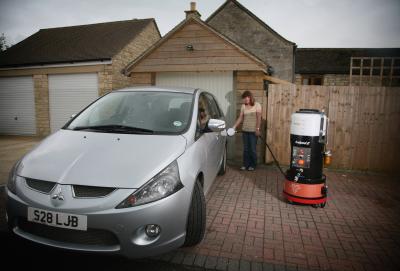
Vegetable oil as a source of fuel produces no net increase in atmospheric carbon dioxide, adds lubrication to the car's engine and reduces engine deposits, making it an environmentally friendly approach to driving. The cost of running a car on cooking oil can prove quite inexpensive, when the source is waste cooking oil from restaurants. The Straight Vegetable Oil engine is installed as an alternative source of fuel in the trunk, since cooking oil gels under 25 degrees fahrenheit, making the diesel engine a vital backup in colder times of the year.
Make sure your car has a diesel engine and that this engine has no rubber seals. Older diesel models were manufactured with rubber seals that will be damaged with the vegetable oil, but newer diesel engines do not deal with this problem. Only diesel cars are able to have a vegetable oil engine installed as an alternative fuel source. If your car uses regular petroleum based gasoline, a conversion to diesel must be made before the conversion to vegetable oil fuel can be performed.
Research and buy a good quality vegetable oil fuel conversion kit form a reliable source. Some kits are advertised as being easy to install at home, but unless you have prior mechanical knowledge, it is best to have it installed by an experienced mechanic. Install the kit in the trunk of the car and hook it up to the car's radiator in order to heat the oil before it enters the engine. In a visible area of the dashboard, install a separate fuel gauge for the cooking oil fuel level, as well as a switch to go from diesel to veggie oil.
Find a source for your vegetable oil. Buying new oil can be expensive, but restaurants are usually happy to donate their waste vegetable oil, which saves them government disposal fees. Chinese restaurants usually have cleaner waste oil that will need less filtering. The oil should be amber in color.
Fill the vegetable oil tank with the waste oil, passing it through 0.5 micron thick filter bags to filter out any food particles.
Start the car by first using the diesel engine in order to warm it up, making the vegetable oil more fluid. This is especially applicable to colder climates. Use the switch installed on the dashboard to manually switch from diesel to vegetable oil. Be sure to switch the fuel consumption back to diesel if the car will be off for more than ten minutes, in order to keep the vegetable oil from gelling in the engine once the car is cold again.